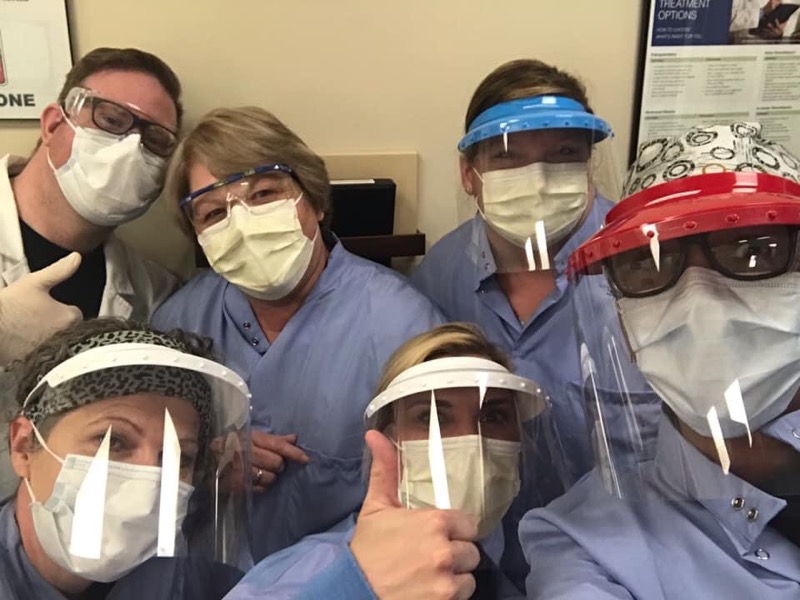
Forest Part Home Modalities Team
While in-center dialysis units have made major changes in their daily protocols during the COVID-19 pandemic, the care of patients undergoing home dialysis modalities has also undergone a significant adjustment.

Dr. Anubha Mutneja, medical director of WashU Nephrology Home Modalities Program
“The COVID-19 pandemic instantly taught us the utility of telehealth in patient care,” says Anubha Mutneja, MD, assistant professor in the Division of Nephrology and medical director of the Home Modalities Program at Washington University. The home modalities staff now does telehealth visits for each home dialysis patient instead of their once a month face-to-face visits. “We had to promptly adapt to telehealth visits in order to protect our patients and staff.”
According to Dr. Mutneja, it was stressful getting everything in order, but the home dialysis staff were more than able to adapt. “Shawna McMichael, our nurse manager, organized the workflow of telehealth clinics exceptionally well. We started with telephone calls to our patients and then transitioned to audio-visual communication. For telehealth visits, we are now using FaceTime and Zoom, since these are approved means of communication under the recent changes in telehealth regulations. Doximity Dialer is another user-friendly option for performing telehealth visits and we anticipate its use in home dialysis clinics.”
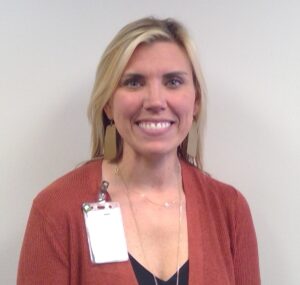
Shawna McMichael, RN, nurse manager of the Home Modalities Program.
“Despite the challenges associated with implementing new and necessary patient telehealth protocols, our staff has gone above and beyond to deliver our standard of care with as little disruption as possible,” says McMichael. “Considering the 130 mile radius we serve, we recognized the role that this evolution in care could play in ensuring that patients still feel a sense of connectedness with their home dialysis team.” The collective efforts of the home modality team have allowed them to do just that, even down to walking patients through how to download and use the appropriate telehealth apps on their phones. “It really speaks to the tireless commitment that’s not only driven our continuation of exceptional patient care, but strengthened our entire team during such an unprecedented time.”
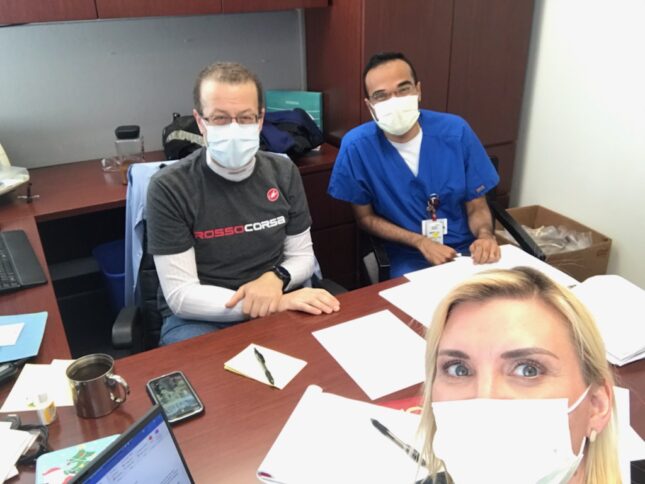
(From left) Dr. George Jarad, Dr. Aniesh Bobba and nurse manager Shawna McMichael, part of the Home Modalities team.
The patients realized that this change was put into effect to protect them from COVID-19 exposure, stresses Mutneja. “While it was overwhelming for some patients to not be able to see their physician and care team in person, we have tried our best to alleviate their fears. The advantage of home dialysis is that we can monitor their treatments remotely and assess their progress. Our goal is to continue to provide outstanding care to our patients despite the physical distance.”
The home modality staff has shown tremendous flexibility and resilience during these difficult times. “They not only quickly adapted to the ‘new norm’ but have also volunteered in different aspects of patient care,” says Mutneja. “We are very grateful for their efforts. These are challenging times for both patients and staff, and we want to do the best we can to support them. ”
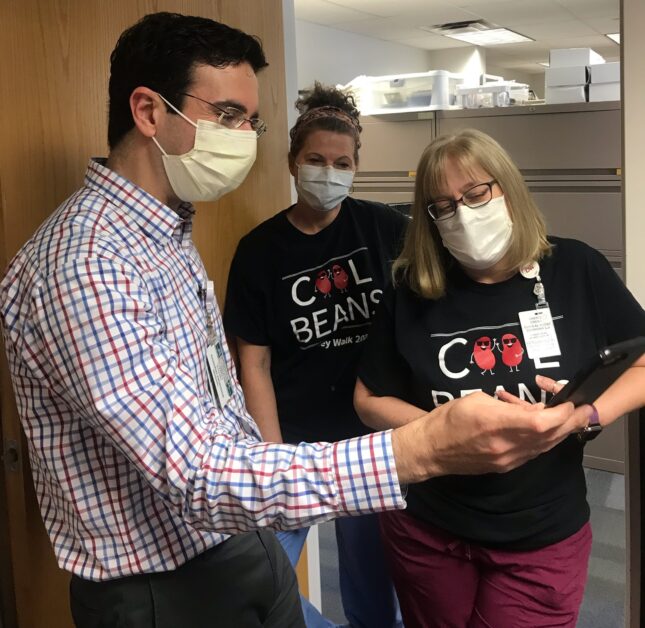
(From left) Dr. Charbel Khoury and home dialysis nurse coordinators Katie Keene and Cheryl Cress tele-greet a previous home hemodialysis patient who recently received a transplant.
Telehealth visits will no doubt have applications in a variety of clinical settings even after the threat of COVID fades. Mutneja believes that potential uses of digital visits may include follow-up of stable home dialysis patients through telehealth, and may be used for increased patient interaction with staff, including the nurses, dietician and social worker. “Even various forms of patient education including ESRD education, PD focus classes could be covered through telehealth.”
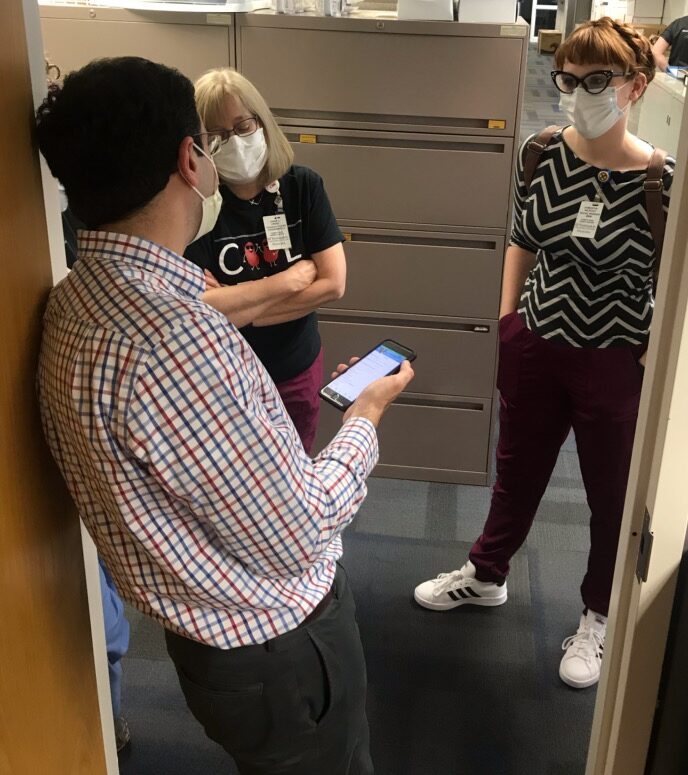
(From left) Dr. Charbel Khoury, nurse coordinator Cheryl Cress and social worker Sam Najduch.
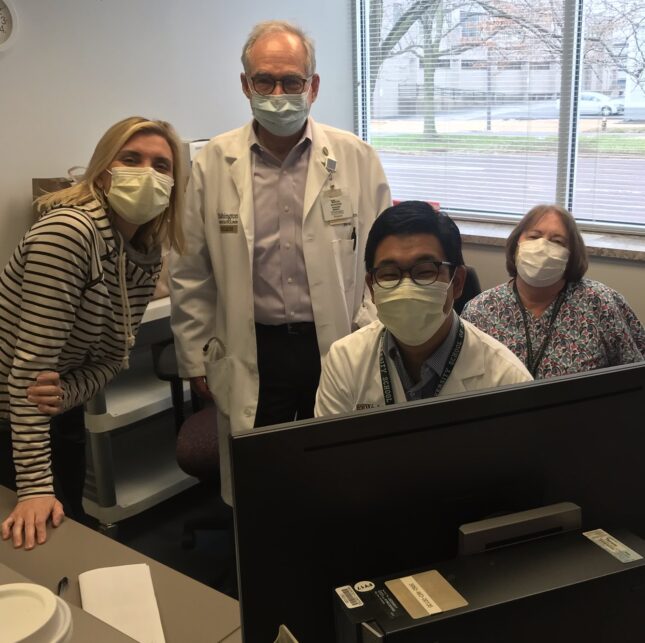
(From left) Nurse manager Shawna McMichael, Dr. Marcos Rothstein, Dr. Gonzalo Matsumura and home dialysis nurse Kathy Ehrhard
On Twitter, follow Anubha Mutneja @AnubhaMutneja, Charbel Khoury @Charbel_Khoury, Marcos Rothstein @NephroMaven, Gonzalo Matsumura and WashU Nephrology @WUNephrology. Please visit and “Like” us us on Facebook at @WUSTLNephology.